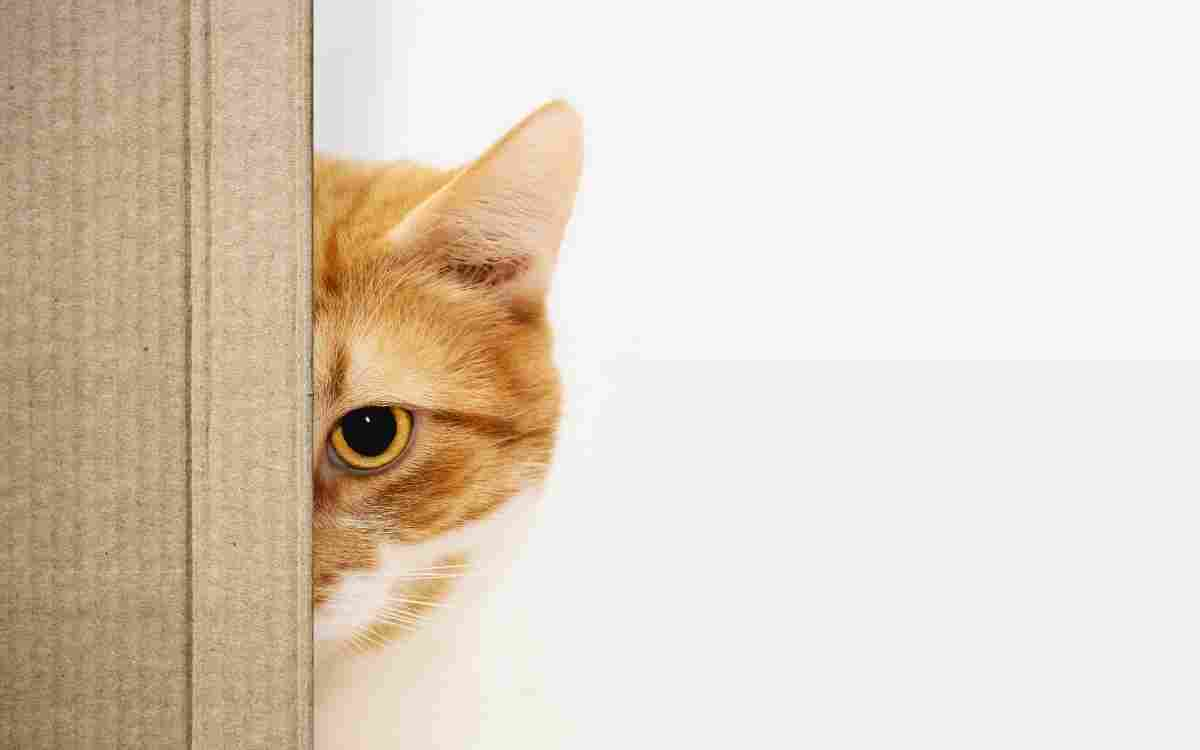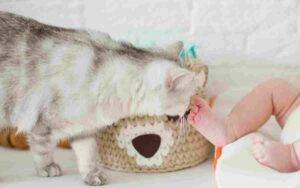

First Steps to Take in Stopping Your Cat Peeing Outside the Litter Box
When you are dealing with your cat peeing outside the litter box and in places they shouldn’t, the first step should be to consult with your veterinarian. A sudden change in litter box habits can indicate a medical issue, such as a bladder or kidney infection, secondary to stress, Diabetes, and Hyperthyroidism. It’s crucial to rule these possibilities out. If the vet gives your cat a clean bill of health, the next step is to create a calm, soothing environment where your cat feels safe and confident, even with the new baby around.
Page Menu
Cat Litter Box 101 – Making Sure Your Cat Has the Right Box, Litter, and Placement
Cats prefer to do their business in a quiet, low-traffic area. According to Jaxon Galaxy, renowned cat behavior specialist, cats should have two litter boxes, since they don’t always like to pee and poop in the same place.
Cat Litter Box Placement
Placement of the cat’s litter boxes is very important. Ensure the litter boxes are not near the baby’s room or other areas with increased activity. A quiet place where the cat won’t feel like they could be ambushed or interrupted at any moment is ideal. If you have an unfinished basement and can ensure that kitty will always have access, that is ideal. Other spots could be a quiet extra bedroom or bathroom, or your laundry room.
Cat Litter Box Maintenance
Cat litter box maintenance is equally important. Make sure that your cat’s litter boxes are always kept pristine. Cats do not like to use a dirty litter box, and some are particularly persnickety.
Perhaps with the baby’s birth and all the changes in your routine, the litter box has been the furthest thing from your mind? Be sure to devote that 5 minutes daily to scoop the box, or delegate this important task to another family member. Scooping once (or twice) a day is really simple and takes only a minute or two per box.
Exploring Different Cat Litters:
Some cats may prefer different types of litter, especially during stressful times. In my opinion and from what I have read, most cats prefer a litter that is non-scented and most like the consistency of soft sand. Cats, particularly cats that have been declawed, can have tender paws, and litter that is to rough or chunky can cause them discomfort. Scented litters may smell lovely to you, but to a cat, with it’s intensified sense of smell, can find it overwhelming and something to avoid. It’s best to choose an unscented (or attractant, as I will detail below) litter and just focus on keeping the boxes clean.
Attractant cat litters, such as those offered by World’s Best Cat Litter, may help your cat return to using the litter box. This type of cat litter is infused with an attractant pheromone that not only draws your cat’s attention, but calms their nervous system and reduces anxiety and stress. Be sure to give this type of litter a try, even though it costs a little more, it’s a heck of a lot less expensive than a new sofa and living room rug.
Understanding “Substrate Preference”
If your cat is peeing on a specific type of material, such as fabric, carpet, clothing or throw rugs, try using a similar material in or right beside the litter box. Puppy pee pads are inexpensive and very easy to dispose of, once used. They could actually save you money on cat litter expenses. Just try laying a pee pad out beside your cat’s litter boxes to see if your cat will pee on it. If so, you have a cat that has “substrate preference”, which is really just a fancy term for “likes to pee on a flat, soft surface”.
Another free option is to take old t-shirts and towels and other soft fabric items that you were planning to donate or dispose of, and cutting them up into small ribbons of material. Empty one of your cat’s two boxes, and replace the cat litter with your new “fabric litter”. Wait and see if your cat uses this new substrate. You could also simply lay an old towel down in the empty box.
Finally, ensure that the litter box, itself, is the right one for your cat. I am not a fan of automatic cleaning litter boxes. I think they frighten cats and could contribute to litter box issues, no matter how “convenient” they supposedly are for us owners.
If your cat is a large size, perhaps the litter box is not big enough. Try to find a box meant for larger cats.
If your cat is older than 12, they could be starting to have the associated aches and pains that we all experience as we age. Consider getting a litter box with a step in opening so they don’t have to jump over a high side to get in.
Many cats do not like covered litter boxes. Cats are at their most vulnerable when they are in the middle of doing their business. They like to be able to see and hear if a potential “opponent” or other danger is approaching. Covered boxes also intensify the scents of urine, feces and any perfume or deodorant that may be in the litter you currently use. If you have covered boxes, take the cover off of one of the boxes and see what happens. If the uncovered box is getting more use, then you have your answer.
Experimenting with different litter box options should shed some light on whether your cat is avoiding the currently used cat litter, placement of the litter boxes, has a substrate preference, or your cat peeing outside the litter box is merely a symptom of the stress they are feeling with the arrival of the new baby.
Hopefully, with this detective work, you can discover whether your choice of cat litter box products are right for your cat, or they may be causing the issues with your cat peeing outside the litter box.
